How to Backup an External Hard Drive in 2025: Windows, Mac & Linux
Keeping your data on an external storage device is a great first step in protecting it from accidents or cybercrime. However, if those drives are lost or damaged, everything on them could be gone forever. To secure these external devices, read on and learn how to backup an external hard drive.
When it comes to keeping data safe, there are two main solutions: local storage and online backups (although for the best of both worlds, you should follow the 3-2-1 rule). However, just because it’s a good idea to make extra backups doesn’t make it easy. In this article, we’ll show you how to backup an external hard drive to another drive and the cloud.
Key Takeaways:
- You should always keep local and online versions of your files.
- Backup providers like IDrive are great for creating both local and online backups.
- Cloud storage can also be used to backup an external hard drive.
There are plenty of good reasons why you should use an external drive for a backup, but even a complicated network attached storage device set up in a RAID configuration will die in a fire or flood. That’s why it’s important to have some kind of off-site backup in place.
Luckily, online backup services have become pretty common, and aren’t too expensive either. So whether you want to backup the files that are already saved to your external hard drive, you have a backup disk on your shelf that you really don’t want to lose, or you’ve just started reading about backups and want to jump right in, keeping your data safe is easier than ever.
-
08/06/2021 Facts checked
Cloudwards updated this article to expand its scope and rearrange it into a step-by-step structure.
Before You Backup an External Hard Drive
In order to backup a drive, you’ll need two things: a drive you want to backup and somewhere to put the data. For the first one, we’ll be using an external hard drive connected via USB. However, these methods will work for any storage device that is recognized by your computer and that you can read and write data on.
10,000+ Trust Our Free Cloud Storage Tips. Join Today!
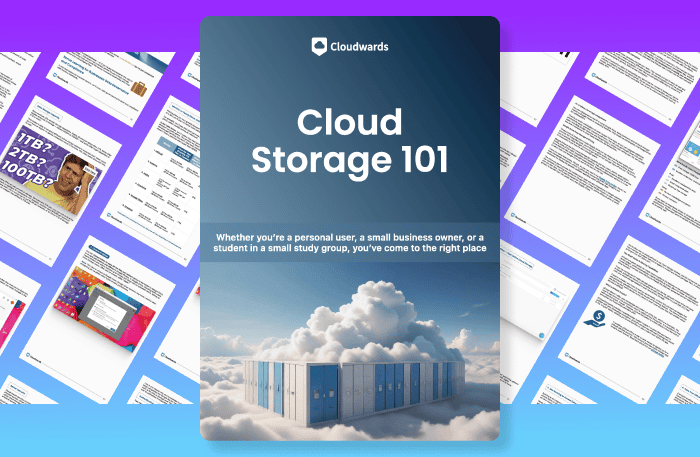
- Demystify cloud storage terminology and key concepts in plain language
- Discover easy-to-implement techniques to securely backup and sync your data across devices
- Learn money-saving strategies to optimize your cloud storage costs and usage
For the backup drive that will hold your data, you can either use another external hard drive or an online storage solution. There are plenty of cloud storage services and online backup providers capable of protecting your data, but we’ll also suggest our favorites when we use them throughout this article.
A Note on File Formats & Compatibility
Although we’ll be using a Windows computer and an external hard drive formatted to NTFS for this guide, these steps are similar for MacOS and many common Linux distros. You shouldn’t have any trouble following along, but you may need to find alternatives to some of the software we’re using if it isn’t compatible with your device.
If you’re on an Apple device, you can also read our articles on how to backup a Mac and the best cloud backups for Macs. These will give you a better idea of the software options available for backing up external hard drives on a Mac, such as Time Machine.
Linux users can instead look through our guide to the best online backup services for Linux to find a solution that offers external hard drive backups. This should help avoid any compatibility issues with software that wasn’t made to run on your computer’s operating system.
How to Backup Your Windows Computer to an External Hard Drive
Before you backup your external hard drive, you’ll need to have something saved on it. To do this, you can just drag and drop the files and folders from your internal storage. However, if you prefer a more elegant solution that can move files automatically, you can use a backup service like IDrive — read our full IDrive review for more information on this provider.
- Install IDrive
There are plenty of good backup services out there that you can use, but for its simplicity, we’re going to go with IDrive. Simply go to the download page, select your OS and follow the installation instructions.
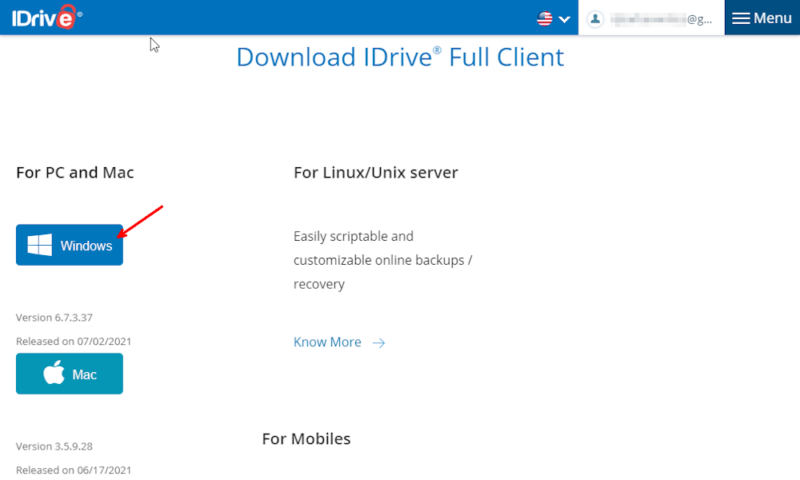
- Sign in to Your Account
You won’t need to pay to create a local backup in IDrive, but you will need an account. Either sign in or create a new one for free.
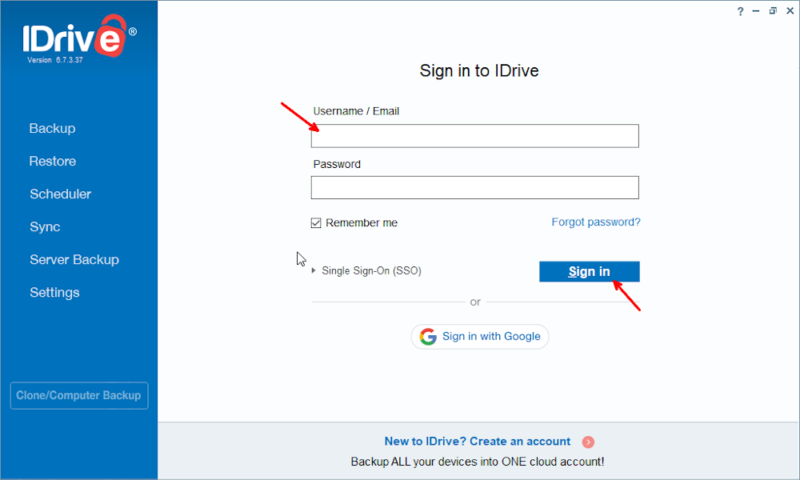
- Go to the Disk Clone Tab
Click the option labeled “clone/computer backup” at the bottom of the sidebar.
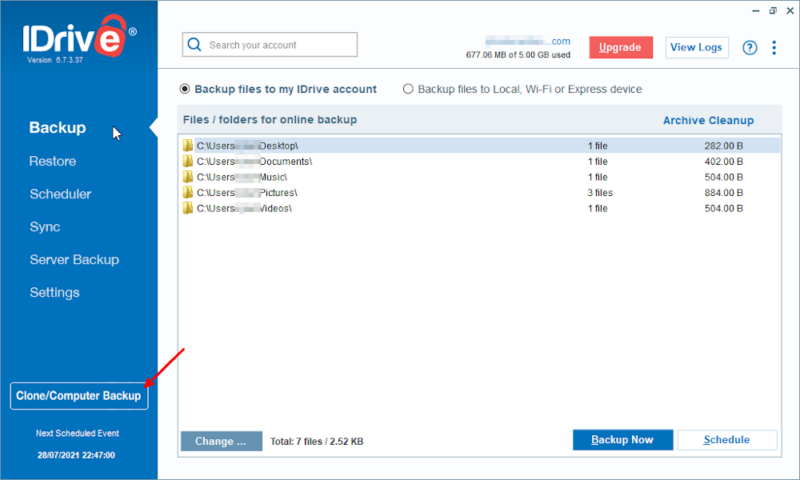
- Create an Entire Machine Backup
For a complete backup of everything on your computer, it’s easiest to use the “entire machine backup” option.
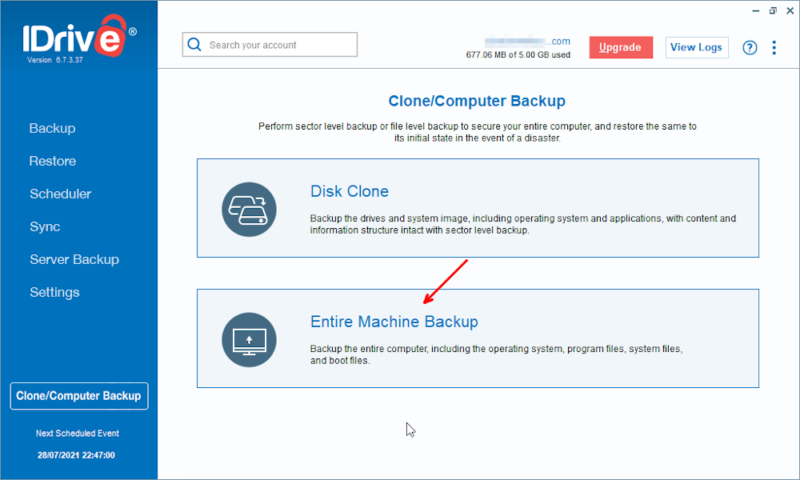
- Backup to a Local Drive
In the “backup” tab, select “encrypted local backup,” set your backup location to the external drive and click “schedule now.”
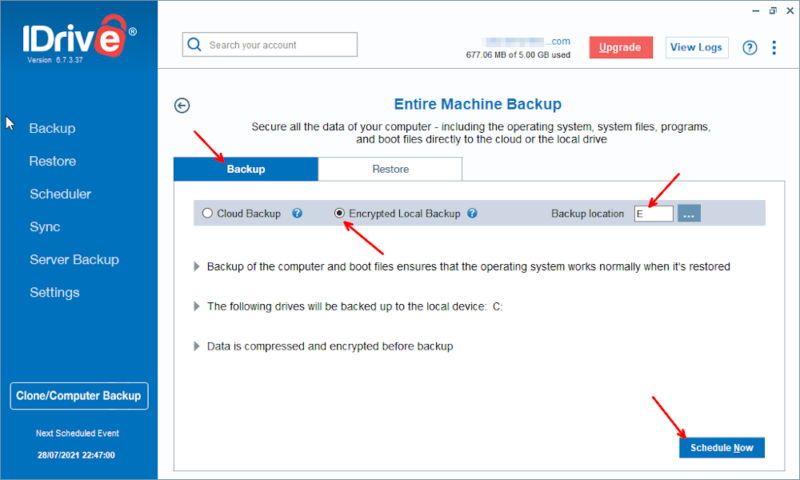
- Set Your Backup Schedule
Here you can set when you want to do regular backups. However, to just do a one-off, select the box next to “start the backup immediately” and then click “save changes.”
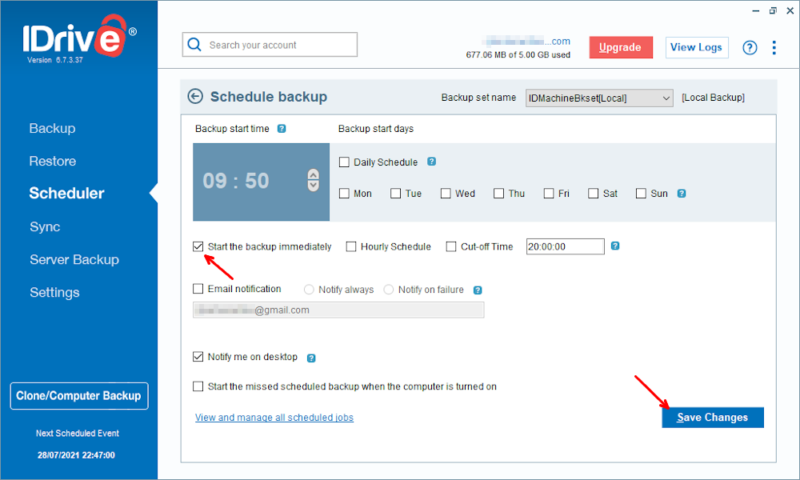
- Find Your Backup
If you want to see your backup files, go into your backup hard drive and find the “IDriveLocal” folder. IDrive will have encrypted all the internal files, but as long as the folder is there, you can recover your data.
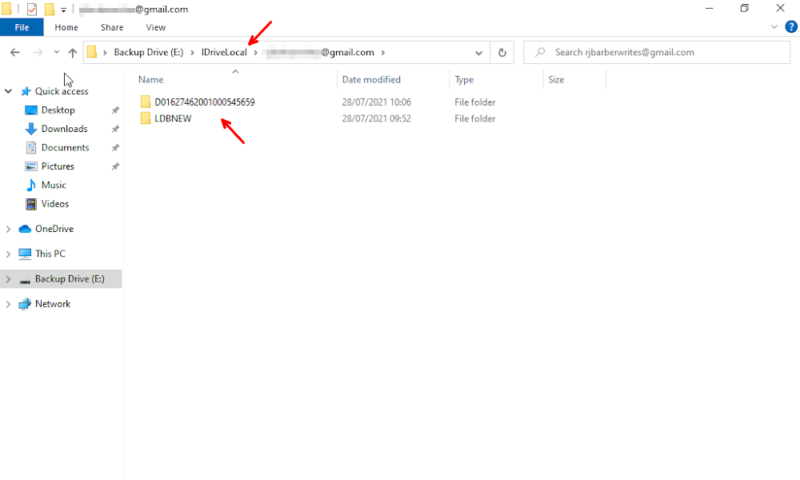
How to Backup External Drives With Cloud Storage
Once you’ve got an external drive ready to be backed up, you should find a cloud storage service to backup to. Any provider that gives you large amounts of storage and you trust to keep your data safe will do, so we’ll use Sync.com for this guide — read our full Sync.com review to find out why it’s our favorite.
Note that while you can just drag and drop the files over, to make sure the backup updates regularly, we’ll be creating a symbolic link (symlink). However, not all cloud storage providers and operating systems work properly with symlinks, so be aware that you may run into some compatibility issues here.
- Install the Cloud Storage Desktop App
As you’ll need a sync folder on your computer to create a symlink, go to the provider’s website and click “download.”
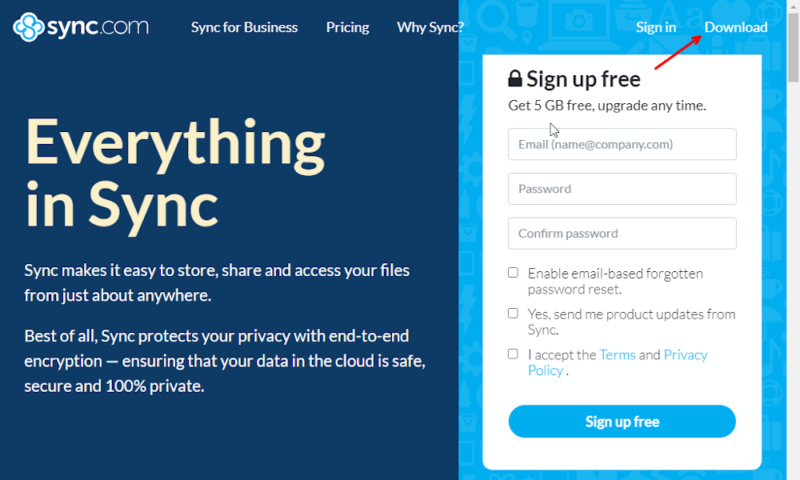
- Sign in to Your Account
Follow the installation process and sign in to your account.
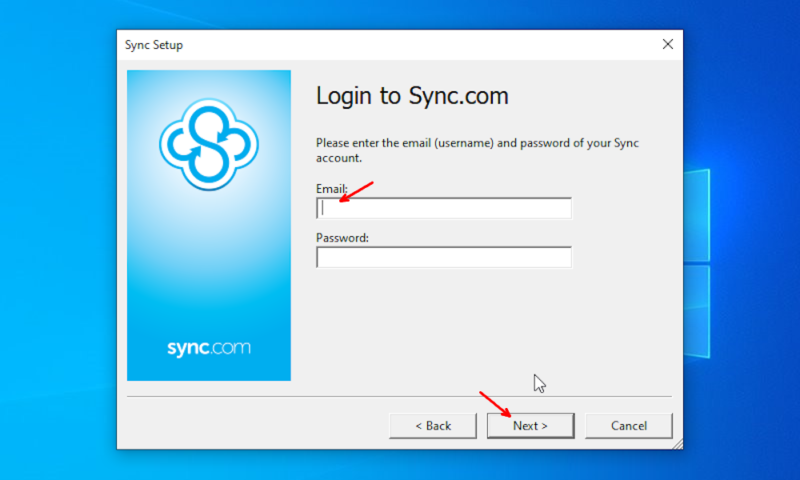
- Open the Command Prompt
The easiest way to make a symlink on Windows is through the command prompt. Make sure you click “run as administrator” or you may get a permissions error.
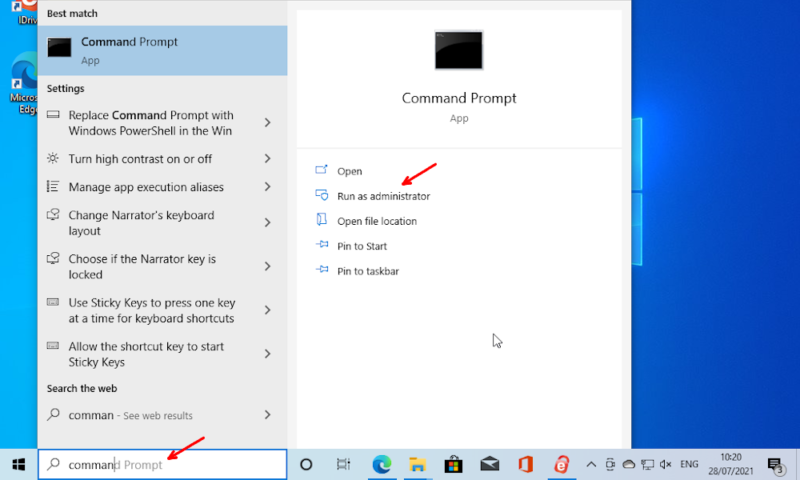
- Create a Symbolic Link
Use the command mklink /D “path to sync folder” “path to external hard drive” to create the symlink. Remember to put the backup in its own folder inside the sync folder — such as \Sync\IDriveLocal — or you may get an error.
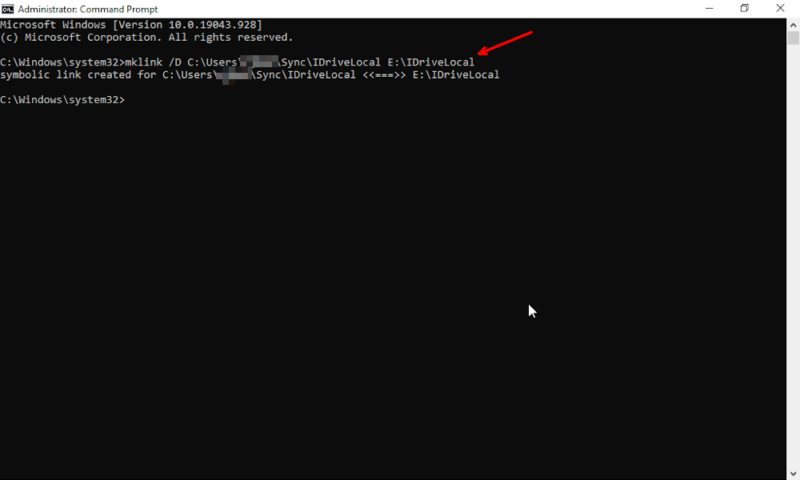
- Confirm That the Backup Is Online
Open Sync.com on another device (or online) and look for your backup. If you’ve created the symlink folder successfully, you should be able to access any stored data, even if the external drive isn’t connected.
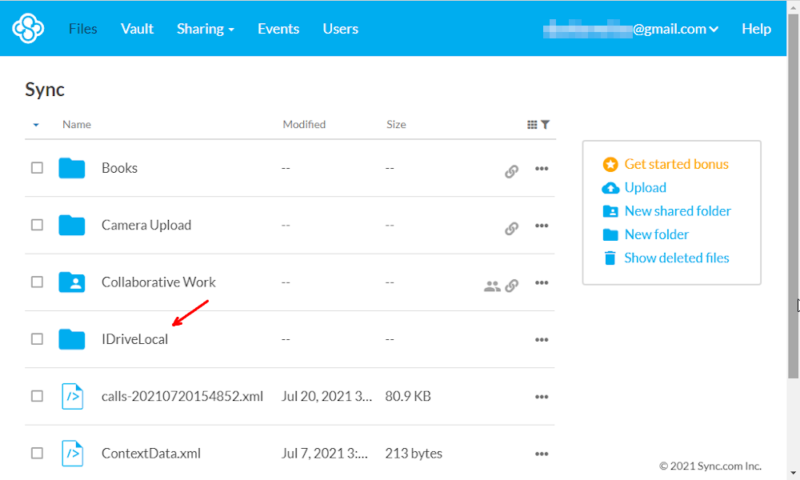
How to Backup External Drives With Online Backup Disk Imaging
Another way to store your backup online is through a process called disk imaging. This is where you create a compressed copy of your data and put it on a different disk — or online in this case. It’s a great way to backup all of your data, and can even store multiple drives at once if you have the storage space.
Since we used IDrive to create our local backup, we’ll also use it to create an online disk image. However, even if you just want to save it online, IDrive requires you to save the disk image on a local backup disk. If you don’t have another drive, you can create an image of your C drive directly, and use that as both your local and online backup.
- Open the Clone Section in the IDrive Desktop App
Since we used IDrive earlier, you can follow those steps to get started. Once you’re in the app, select “clone/computer backup” in the bottom-left corner.
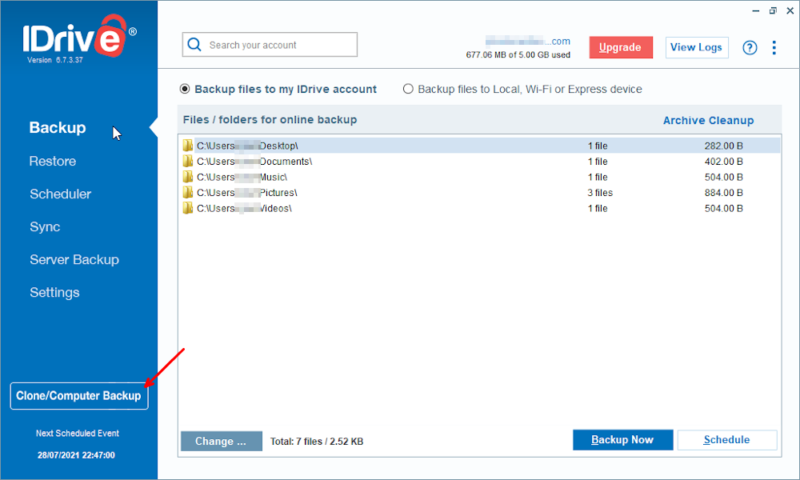
- Choose to Clone a Disk
In order to create a disk image of any drive, select “disk clone.”
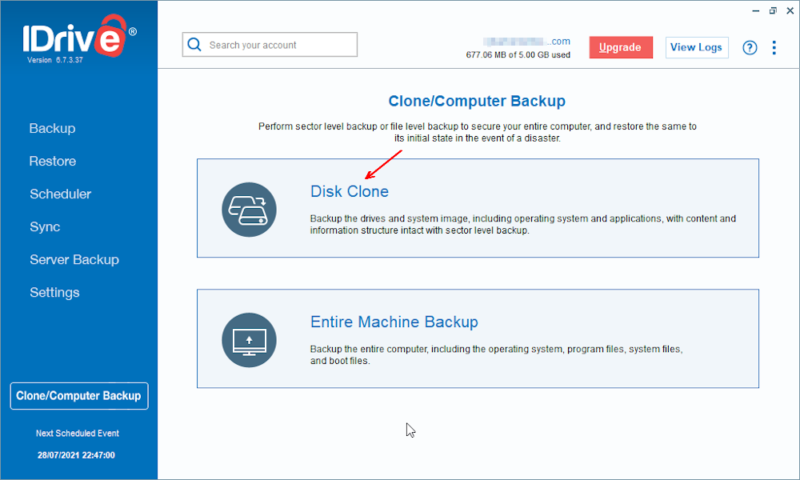
- Select Your Backup Preferences
Choose the drive you want to backup and the destination for the backup, then click “schedule now.” You should also make sure that it’s set to “local backup + cloud backup” to use online storage.
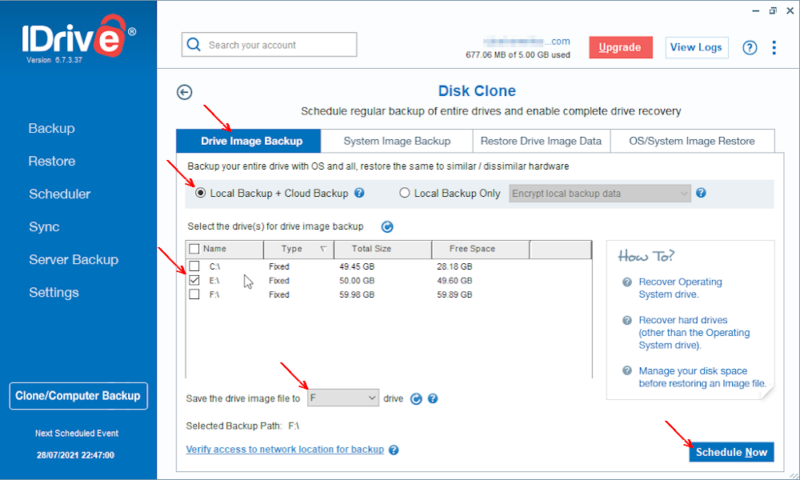
- Schedule Your backup
Either set up a regular backup or just click “start the backup immediately,” then click “save changes.”
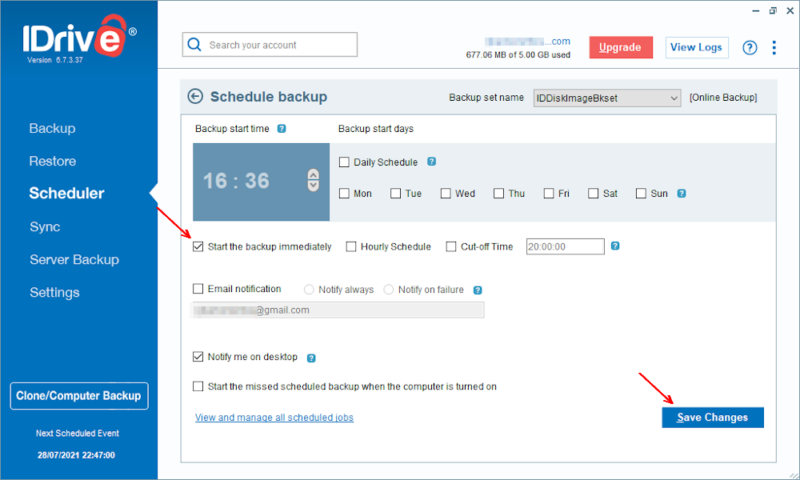
- Find Your Backup
To make sure the backup was successful, go into the “restore” tab and look for the “DiskImage.img” file.
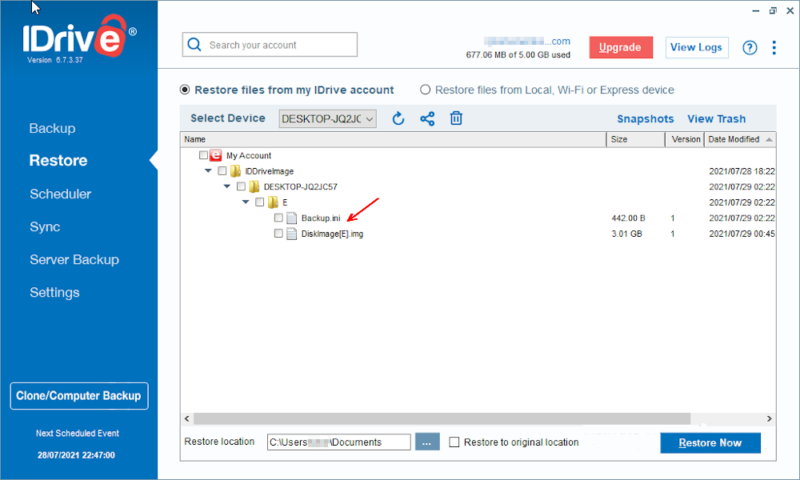
Final Thoughts: Backup an External Hard Drive
Just because your data is on external hard drives doesn’t necessarily mean it’s safe, and unlike your computer’s internal storage, you may not find out that a drive is dead for a while. So whether your external drives are for storing extra documents and photos or they’re backup disks kept just in case, it’s still important to back everything up to the cloud.
However, while cloud storage is often better than a local backup (check out our guide on cloud storage vs external drive), you should still be careful of certain types of cybercrime.
To stop a hacker from locking you out of your data, you should make sure your backup has ransomware protection. It’s also important that it has zero-knowledge encryption, if you want to stop everyone else from looking inside.
Have you made a backup of your data? Did you backup your external hard drives to the cloud? Were there any good backup methods that we missed? Let us know your thoughts in the comments below. Thanks for reading.
FAQ
Yes. You can backup your data to another external hard drive to keep it extra safe from disk failure, but as this doesn’t provide much protection from fires and floods, we suggest you also use an online solution.
You can backup your hard drive with most backup software. Simply open the program, select the files or drive you want to backup, then click accept.
If you’re planning on formatting an external hard drive, you can back it up in the normal way. As most online backups allow you to return to one of several previous backups, as long as there is a recent one, you can start the formatting process without losing any data.

